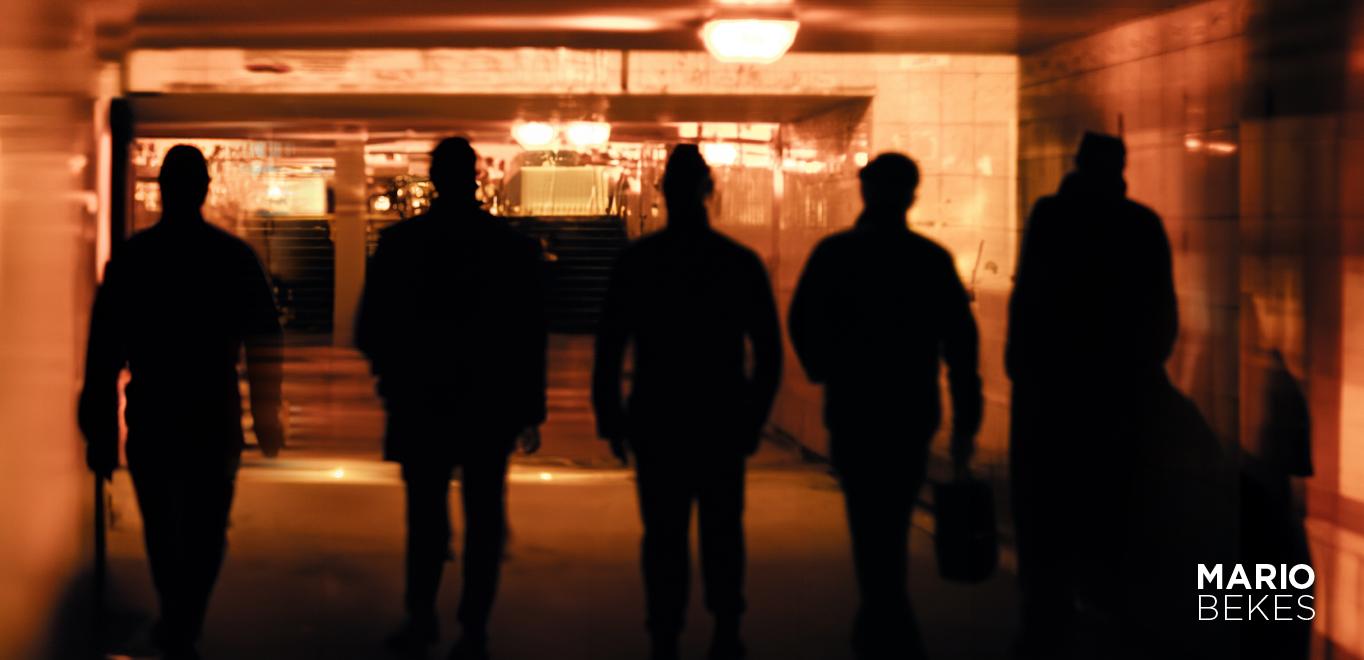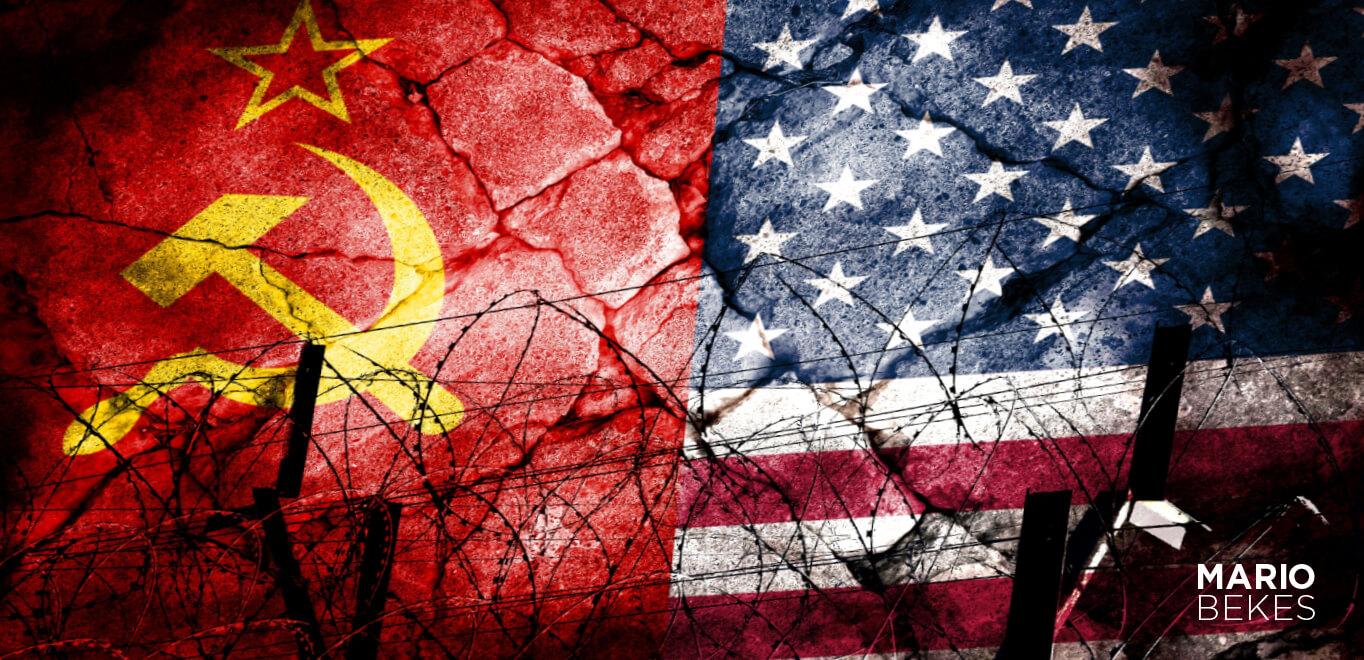Whether it is done in the name of patriotism or treason, it is wrong.
The British aristocracy that spied for the Soviets
The “Cambridge Five,” arguably the best Cold War espionage outfit, compromised top officials in Western agencies to collect the most sensitive data from them, which they then sent directly to the KGB.
“Deny everything. Never acknowledge anything, not even when they wave proof in your face.”
This is the first and most important lesson that any top spy must learn in order to survive the service. In this way, Kim Philby, the Cold War’s greatest double agent, taught Stasi intelligence in East Berlin.
There are stories of intricate Cold War espionage networks that occasionally sound fabricated. However, few of those stories have the creativity and frightening potential that this one does.
Cambridge’s Five. They were not faceless bureaucrats buried deep within the federal government. These men belonged to the British aristocracy and had attended the University of Cambridge, one of the world’s most prestigious educational institutions.
As students in the 1930s, they formed friendships and ideas that would eventually take them down a path of deception, between the allure of communism and the frightening shadow of fascism.
Tensions in a Cold War-era world
During the interwar years, there was a lot of upheaval and change. Following World War I, Europe was traumatised by the conflict, dealing with the rise of new political ideas and the breakup of empires.
Despite its victory, the United Kingdom was not immune to the continent’s social and economic turmoil.
As unemployment rose and financial hardships exacerbated following the Great Depression, many people began to question the viability of capitalist democracies.
Intellectual circles provided a fertile ground for these waves of discontent, and universities evolved into centres of political discourse and debate.
The nation’s intellectual elite congregated at Cambridge University, where an exceptionally heated ideological battle raged. The institution had long been a bastion of tradition and conventional wisdom, but the 1930s saw the rise of left-wing student organisations, particularly communist sympathisers.
Despite the grim undertones of Stalin’s purges, others saw the Soviet Union as a light of hope against the rise of fascism in Europe, as personified by Mussolini’s Italy and Hitler’s Germany.
How they were hired
Even as the political situation outside its gates became more volatile, young minds were being shaped and influenced in the venerable halls of Cambridge University. Certain groups found communism especially alluring because it evoked ideals of a perfect society based on equality and the common good.
Many people, particularly the Cambridge Five, saw this worldview as a protective shield against the impending authoritarian storm.
However, their radicalisation was more than just a mental endeavour. It was deeply personal, driven by camaraderie in covert meetings and discussion groups, friendships, mentorship, and a sense of shared purpose.
In this situation, the Soviet intelligence agency saw an opportunity. The NKVD, which preceded the KGB, saw potential in these disillusioned young men not just based on their opinions, but also on the future leadership roles they were anticipated to hold.
The hiring process was careful and private. The Soviet officials, who were experts at psychological manipulation, used the young men’s combination of idealism and ambition. They were given the opportunity to actively combat the rise of fascism and develop communism, joining forces with something bigger than themselves.
For example, Kim Philby (about whom I previously wrote) was introduced to the field of espionage by a fellow communist sympathiser, and everything fell into place from there.
Through introductions and recommendations, a group was formed one by one. Every member is progressively meticulously assimilated into the group, believing that their concealed actions are not simply acts of disobedience, but rather an important contribution to a good cause.
What Exactly Were the Cambridge Five?
Philby, Kim
Kim Philby was the most important of them all. Sharp-witted and charismatic, Philby quickly rose through the ranks of the British intelligence agency, eventually gaining a senior position in MI6.
He was one of the KGB’s most valuable assets because of his position, which allowed him to offer the Soviets a wealth of essential information.
Beyond his espionage activities, Philby’s secret life demonstrated his considerable aptitude for deception, as he maintained close contacts with many in the intelligence establishment, including those entrusted to find Soviet spies.
Mr. Donald Maclean
Then there was Donald Maclean, a man as committed to the Communist cause as Philby. McLean acquired access to nuclear and diplomatic secrets while working in the British Foreign Office.
During his tenure, he gently conveyed this intelligence to the Soviet Union, which had a direct impact on the geopolitical landscape of the early Cold War.
Burgess, Guy
Maclean’s friendship with Guy Burgess, another prominent ring member, complicated their espionage efforts.
Burgess appeared to be an unusual option for a spy due to his colourful personality and casual attitude.
Nonetheless, his work at the Foreign Office and then the British Embassy in Washington allowed him to provide critical intelligence to the Soviets on a regular basis, demonstrating the Cambridge network’s effectiveness.
Mr. Anthony Blunt
Anthony Blunt was an equally essential member of the group, even if his contributions were sometimes overshadowed by those of his contemporaries. Blunt was a well-known art historian whose covert operations contradicted his academic pursuits. He was a liaison between MI5 and MI6 in the United Kingdom, giving him access to many intelligence secrets.
Blunt definitely succeeded for many years in advancing Soviet objectives until confessing decades later in exchange for security.
Why did I begin my story with four plus one?
Because the stories about these spies were so widely spread in the early 1990s, the discovery of the fifth member of the group did not fit into anyone’s script.
Anthony Blunt, in particular, had a talent for spying and was drawn to John Cairncross.
Cairncross, John
The Cambridge Five’s story is completed by John Cairncross. Despite being marginalised in popular narratives on occasion, Cairncross made an important contribution.
During WWII, he worked at the code-breaking laboratory Bletchley Park and later in many government ministries, providing the Soviets with a diverse range of intelligence.
What details and secrets did they discover?
The revealed intelligence, which encompassed everything from nuclear research to war preparations, transformed the geopolitical landscape and immensely assisted the Soviet Union in its ambition for global dominance.
Kim Philby maintained an unrivalled position within MI6. He was based in Washington at the onset of the Cold War and had access to the inner workings of the Western intelligence system.
In this capacity, he was able to continue a steady supply of intelligence to Moscow while alluding to suspicion from other spies. Philby specifically briefed the Russians about Operation VALUABLE, a plan to incite an anti-communist revolt in Albania.
His timely intelligence enabled the Soviets and their allies to neutralise the project, ensuring its devastating collapse.
Donald Maclean made significant contributions in a different field. Maclean’s position in the Foreign Office provided him access to the most highly classified nuclear weapons information in the Western world. Subtly, he informed the Soviets about the atomic bomb and, later, US nuclear policy.
By revising its own nuclear plans, the USSR was able to level the playing field in the extremely competitive nuclear arms race.
Despite his troubled personal life, Guy Burgess was a valuable source of diplomatic intelligence for the Soviets.
While working in the British Embassy in Washington, D.C., he supplied the Soviet leadership with an intimate perspective of Western diplomatic attitudes and methods by passing along critical documents pertaining to Anglo-American negotiations.
Meanwhile, Anthony Blunt’s acts were less visible but no less powerful. Because of his position as a liaison between British intelligence services, he was able to obtain a wide range of secrets.
Up the years, he has passed up hundreds of documents ranging from MI5 operations to British agent identities.
John Cairncross, stationed at Bletchley Park, had access to Ultra Secret, which included deciphering the German Enigma codes, as one of the most valuable resources available to the Allies.
During the pivotal Battle of Kursk in 1943, he assisted the Soviets by giving them with critical pieces of this decrypted intelligence.
What prompted their discovery?
Regardless of how diligent the Cambridge Five were, the nature of espionage meant that the potential of detection was always present.
By the early 1950s, cracks in their protective shroud of secrecy began to emerge, thanks in part to Western counterintelligence efforts and the testimony of Eastern Bloc defectors. The intelligence community began to piece together a picture of severe betrayal within their ranks.
The defection of Igor Guzenko, a Soviet codebreaker in Canada (the guy who initiated the “Cold War,” about whom I previously wrote), sowed the first seeds of suspicion. Despite the fact that Guzenko did not provide direct evidence in regard to the Cambridge Five, his revelations about broad Soviet espionage operations in the West prompted intelligence organisations to reassess and scrutinise their operations.
As the investigations advanced, the web that surrounded the Cambridge network became tighter.
Donald Maclean was among the first to be probed since his profession allowed him to have access to nuclear secrets. By 1951, MI5 was on the verge of demonstrating his treason. As the noose tightened, the Soviets arranged Maclean’s escape with Philby’s help.
In an unexpected change of events, Guy Burgess, who was neither under suspicion nor planning to defect at the time, joined McLean, ostensibly to aid him. Burgess’ abrupt departure, paired with McLean’s, added to the mystery and raised further concerns.
Because of his strong relationship with Burgess and his respected position in MI6, Philby was definitely suspect. Despite being “cleared” in a cursory investigation, his reputation in the intelligence community has suffered. Philby opted to desert to the Soviet Union, where he would spend the rest of his life, as new evidence emerged and another session of severe interrogation.
Anthony Blunt’s presentation was longer and more detailed. Blunt was exposed as a spy in 1964 after American defector Michael Straight provided evidence. Blunt confessed in exchange for immunity from prosecution in a secret bargain to avoid public humiliation. He didn’t come out publicly until 1979, which startled many British establishment figures.
Despite being probed several times throughout the 1960s, John Cairncross only admitted to his espionage activities in 1964. His public exposure was delayed, as was Blunt’s, and his participation became well-recognised in the 1990s.
Their influence on the remainder of the Cold War
The idea that members of the nation’s elite, educated at its most prestigious institutions, might turn against their own country startled the establishment.
Western intelligence organisations, particularly Britain’s MI5 and MI6, were badly shocked by the Cambridge Five’s treachery.
Their impact has been felt in political corridors, intelligence services, and the broader social fabric, altering people’s notions of loyalty, trust, and the weakness of democratic systems.
It was emphasised how critical it was to examine internal security measures, screening methods, and recruitment practises as soon as possible.
Politically, the UK’s public relations suffered significantly as a result of the defection and the subsequent revelations.
They presented an establishment riddled with flaws that allowed ideological infiltration, as well as showing clear flaws in the nation’s intelligence system.
After Kim Philby, Guy Burgess, Donald McLean, Anthony Blunt, and John Cairncross, all screening agent procedures failed. There is still no open discussion on the damage they caused to their country.
The British MI-5 and MI-6 kept the 400-page record about them hidden for fifty years, maybe out of embarrassment or fear of the repercussions. They worked extremely hard to keep their operations covert, particularly from America, which they also dealt heavy blows to.
The lessons learned from their story are still pertinent to discussions about intelligence, national security, and the complexities of international combat today.









